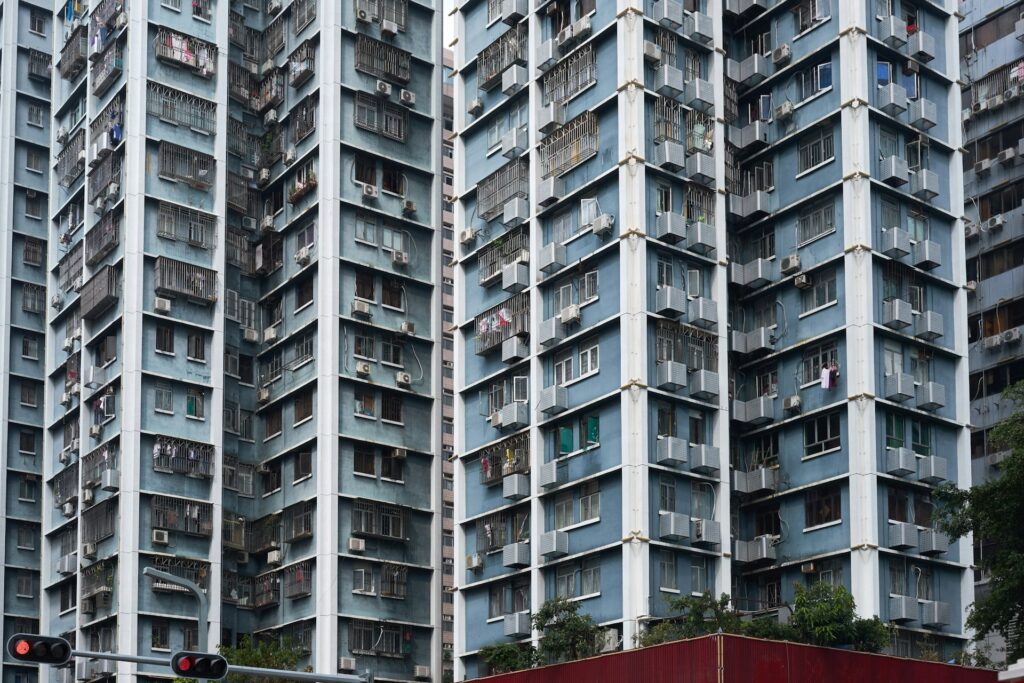Urbanization and Slum Formation: The Impact
Transit-oriented development or simply city development or growth that has become synonymous with modern progress, has transformed cities globally.
Although the process mostly associates with the positive concept of progress and opportunities, increased rates of urbanization became a cause for slums formation.
At present, more than one billion people inhabit vulnerable households and still face the problem of substandard shelter, basic facilities, and socio-economic marginalization.
This blog explores the link between urbanization and slum formation under three key headings: ideas addressing issues of urbanization and housing deficit, population mobility and disparities, and influence of poor urban planning.
Urban Growth and Housing Shortages
When societies become urbanized, the pressures for housing and infrastructural development are markedly high.
Slums develop when urbanization occurs but a city cannot support the growth with enough services.
Key Dynamics:
1. Population Explosion:
High birth rates and the move from rural to urban areas lead to high incidences of intensified rapid growth in urban areas outcompeting housing markets.
This is especially the case in mega and complex cities such as Lagos, Mumbai and Jakarta where millions of citizens live in shanties because formal, affordable housing is scarce if not entirely nonexistent.
2. Lack of Affordable Housing:
Quite often, the housing markets within the urban structure of operation cater to middle to upper income earners, with little provision for housing low income earners.
High-margin projects to consumers are preferred by developers leaving a large gap in the provision of affordable housing.
This is compounded by the fact that there is no rent control, nor is there government sponsored subsidies for affordable housing.
3. Informal Economy Dependence:
Most of the people living in the slum provide their labor in the informal sector and this most of the time comes with little wages that are also unpredictable.
These workers are locked out of formal borrowing and are unable to achieve financial security which leads to their living in squatter areas because housing there is cheaper but of poor quality.
This failure to provide homes to growing urban populations is a breakdown in urban governance, where slum development becomes a default solution to inadequate housing.

Migration and Urban Inequality
Migration is at the root of most cases of urbanization and one of the most significant causes of slum development.
Urban dwellers looking for better paying jobs are left to beg in the streets because cities have become centers of exclusion.
Key Dynamics:
1. Rural-to-Urban Migration:
Therefore, in the third world countries, rural poverty, joblessness forces people to migrate in cities in search for jobs.
But owing to a limited absorption capacity of urban economies they are compelled to live in the slums.
To find and maintain contractual employment, the majority of those in precarious or no work at all engage in the informal sector, thereby trapping themselves in a cycle of joblessness.
2. Socio-Economic Exclusion:
Newcomers are particularly vulnerable to prejudice and exclusion from formal housing, health care, and learning services.
I will talk of how this has left some groups of people out and entrenched inequality and lack of upward mobility keeping families in poverty for generations.
3. Wealth Gaps in Cities:
The dismal dynamics prevailing in any urban society tend to exaggerate the level of economic divide.
While the Yoruba-Manchester elite benefits from improved infrastructure and services, the majority of the residents in the identified Youth’s hostels, are cramped up in deplorable structures and conditions, with abysmal access to basic amenities.
The developed world and emerging giants like, Sao Paulo, Nairobi are living examples as we can find outsized affluent homes alongside mega-slums.
Globalization through migration is proof that population mobility results in urbanization hence highlighting the importance of framing policies concerning equal integration of the newcomers in the cities especially in the sectors of housing, service industries and employment.
The Role of Inadequate Urban Planning
The root causes of slums therefore are as a result of faults in urban planning. Very often governmental and planning authorities are unable to follow the speed of growth which leads to uncontrolled sprawl and growth and proliferation of informal settlements.
Key Dynamics:
1. Lack of Proactive Planning:
Most metropolitan areas experience unplanned expansion, largely due to lack of sound planning mechanisms.
Undisciplined expansion of cities decentralizes the living conditions of the poor hence access to infrastructures and services remains a challenge.
2. Weak Governance and Land Policies:
This makes corruption and poor bureaucratic decision-making and, most important, poor law enforcement for the prevention of the squatters’ informal occupation of a given piece of land to establish an environment that sustains the informal squatter settlements.
It also affects the affordable housing as well as land reforms because the governance is not good.
3. Neglect of Slum Areas:
Other governments take a routine approach that concentrates on a direct approach of handling the issue by removing people from their slum homes or simply re-locating them.
These strategies are often a technique of eviction without solving housing deficits or the real problems in the economy.
4. Climate Risks and Vulnerability:
It is widely evident that most squalor habitats are environmentally unsuitable such as flood plains or steep slopes because safe and affordable land cannot be procured.
Lack of adequate planning makes these communities very susceptible to effects of climate change and natural disasters.
Lack of proper urban planning not only creates slums and squatters but also maintains them by not offering a way forward and a program of progressive transition.
Conclusion
The dynamic of development and emergent growth of urban centers on the one hand brought economic prospects for sustainable growth of the people’s wellbeing, but at the same time highlighted issues such as urban poverty, inequality in access to shelters, migration and poor urban development.
Slums are by far a visible sign of these challenges more so the deficiencies in infrastructure, governance and equity.
This indicates that for cities to minimize the effects of urbanization on slum generation, cities have to come up with progressive policies.
Public amenities, housing reforms, inclusive city planning and all round social ameliorative programmes needs to be encouraged and embraced in order to reduce the current myopic treatments of our major cities.
This, when achieved, will leave our cities as places of abode where every citizen can be given dignity, free from violence, and equal chance at meaningful livelihood.
Also read: What is Urbanization? A Global Phenomenon


Nice blog here Also your site loads up fast What host are you using Can I get your affiliate link to your host I wish my web site loaded up as quickly as yours lol